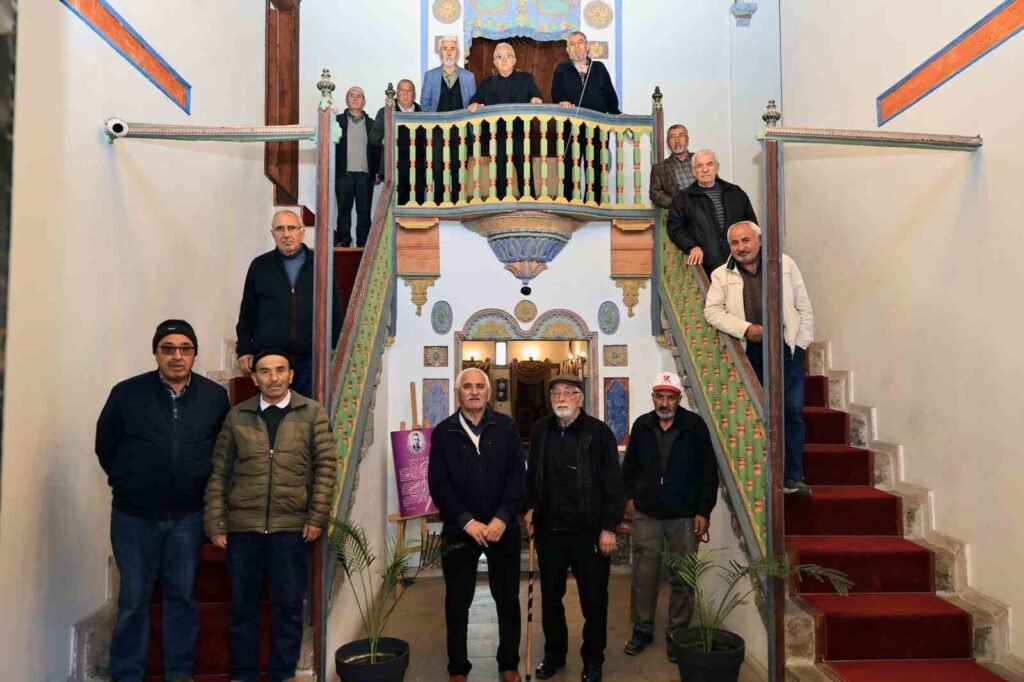Thousand-year-old ‘lover’s game’ came to life in Erzincan
In Erzincan, tradesmen are trying to pass on the thousands of years old troubadour game, which is on UNESCO’s list of intangible cultural heritage and has been forgotten, to the young generations. Erzincan tradesmen are reviving the thousands of years old troubadour game, which is on UNESCO’s list of intangible cultural heritage and has been forgotten…

In Erzincan, tradesmen are trying to pass on the ancient game of ‘aşık’, which has been on the verge of being forgotten, to the younger generations. UNESCO’s Intangible Cultural Heritage list includes the ancient ‘aşık’ game, which has been on the verge of being forgotten for thousands of years, and the tradesmen of Erzincan are reviving it to pass it on to the younger generations. Hamza Karaman, a tradesman from the central market in Erzincan, started teaching the ancient ‘aşık’ game to the youth by playing it in front of his shop in his spare time, which has a history of thousands of years. Wanting to pass on the ancient ‘aşık’ game, which has been on the verge of being forgotten with the introduction of technological devices, to the new generations, Karaman teaches the youth the game, gives tips on playing ‘aşık’ bone and winning, encouraging them to both move and socialize. Tradesman Hamza Karaman stated, ‘The indispensable game of our childhood, ‘Aşık’, we gather with our friends in Erzincan to play. This game is indispensable for those who know it. Since our childhood, this game has always been in our minds. When we have free time here with our tradesmen friends, we try to pass on this indispensable ‘aşık’ game to the new generation to some extent with our own efforts. Our children today are addicted to technology, so we are trying to keep this game alive here for them to see and get to know the games we used to play,’ he said. Gürbüz Araz, who said he played the ‘aşık’ game from a young age, said, ‘It was the most beautiful game we played in the village in our childhood. Today’s children do not know this ‘aşık’ game. In order not to let this game be forgotten, we try to revive it by playing in the city center with friends.’ The ‘aşık’ game, which takes its name from the ‘aşık’ bone found in the hind legs of sheep and goats, is known as the source of inspiration for the game played with marbles and balls in Anatolia. The ‘aşık’ game, which has reached from the earliest periods of Turkish history to the present day, is listed on the UNESCO List of Intangible Cultural Heritage of Humanity. How is the ‘aşık’ game played? ‘Aşık’ is played with a four-sided bone extracted from the hind legs of sheep or goats. There are four types of the ‘aşık’ game played, such as three feet, circle, ompa, and han games. The game can be played by two or more people. In the three-foot game, the ‘aşıks’ are lined up at a three-foot distance. The player hits the ‘aşık’ and moves it further than three feet away. In the han game, the ‘aşıks’ are thrown into the circle, and the ‘han’ called ‘aşık’ is finally hit and taken out of the circle. In the ompa game, two circles are drawn. ‘Aşıks’ are placed horizontally in one circle and vertically in the other. The player who removes the horizontally placed ‘aşıks’ from the circle becomes the winner of the game and takes all the ‘aşıks’. In the circle game, the ‘aşıks’ are lined up to come to the exact center of the drawn circle. The player who hits the most ‘aşıks’ out of the circle becomes the winner of the game.







